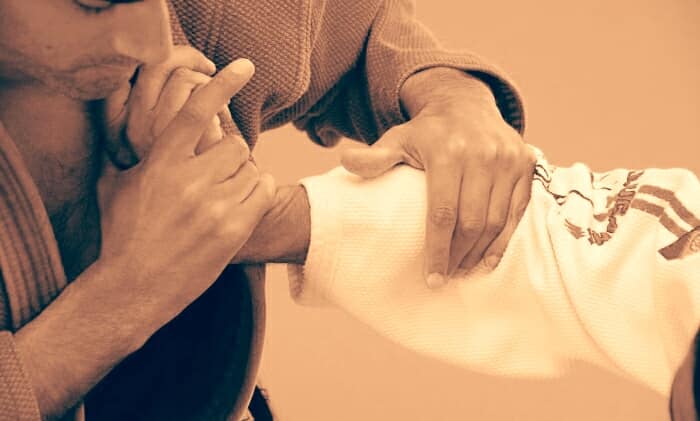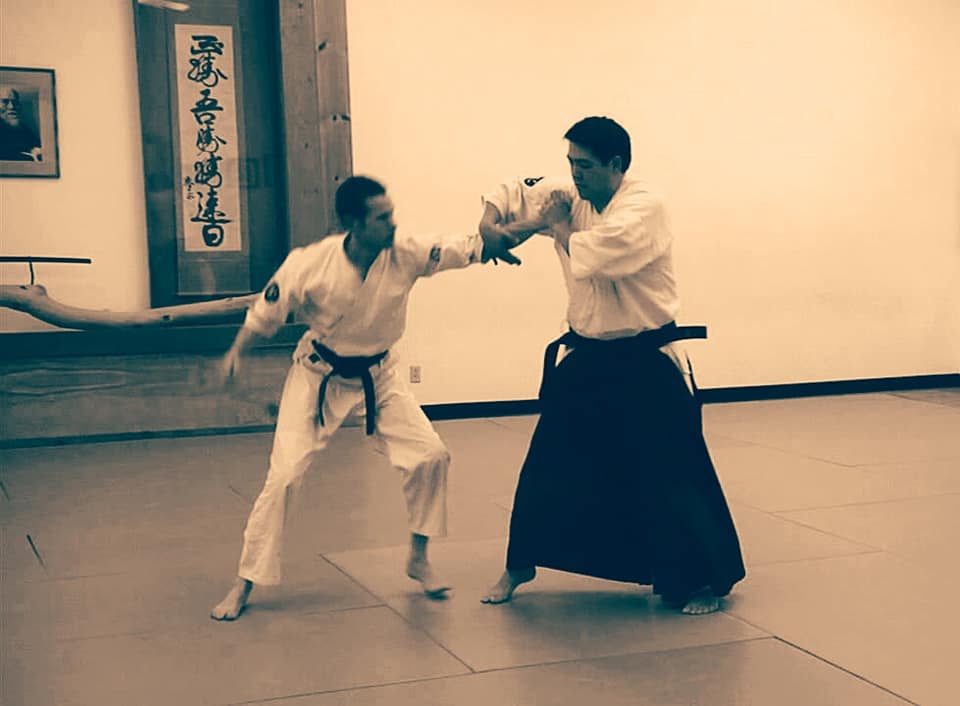The popular Facebook group “Aikido” shares well-written content about the traditional martial art, and the technical notebook.
Katadori is the shoulder grip. Here, uke’s hand has a firm position, making the wrist strong and resistant to any moving or bending. You need to turn uke’s hand upside down, in order to do the nikyo, but that is not easy if uke has applied this grip firmly.
Don’t try to turn uke’s hand around, using only your hand. This is too weak, if you are not much stronger than uke. Instead, press your hand onto uke’s, to fix it on your shoulder, and then turn your whole shoulder around.
Make a circular turning move with your shoulder, so that uke’s hand is turned upside down, because it is fixed on your shoulder.

Before this turning of your shoulder, make sure to extend uke’s arm, and also to bend uke’s wrist, so that there is an angle between uke’s hand and lower arm – although uke’s grip on the shoulder remains. Do this with taisabaki entrance step, and with the circular movements of your arm.
One arm moves toward uke’s face, to distract uke and avoid additional attacks. The other arm strikes at uke’s wrist, so that it bends. Uke’s grip weakens when the arm is extended and the wrist is bent.
Notice that you need to make several taisabaki, evasive body movements. The first one is when you enter and extend uke’s arm. The second one is when you move away, and turn your shoulder around in order to turn uke’s hand upside down. The third is when you move to uke’s side, in order to apply the nikyo pressure. The fourth is when you make the circular movement to get uke down on the floor for the pinning at the end. Each movement should get you out of the way of a possible strike from uke’s free hand.
Source: Facebook/Aikido



